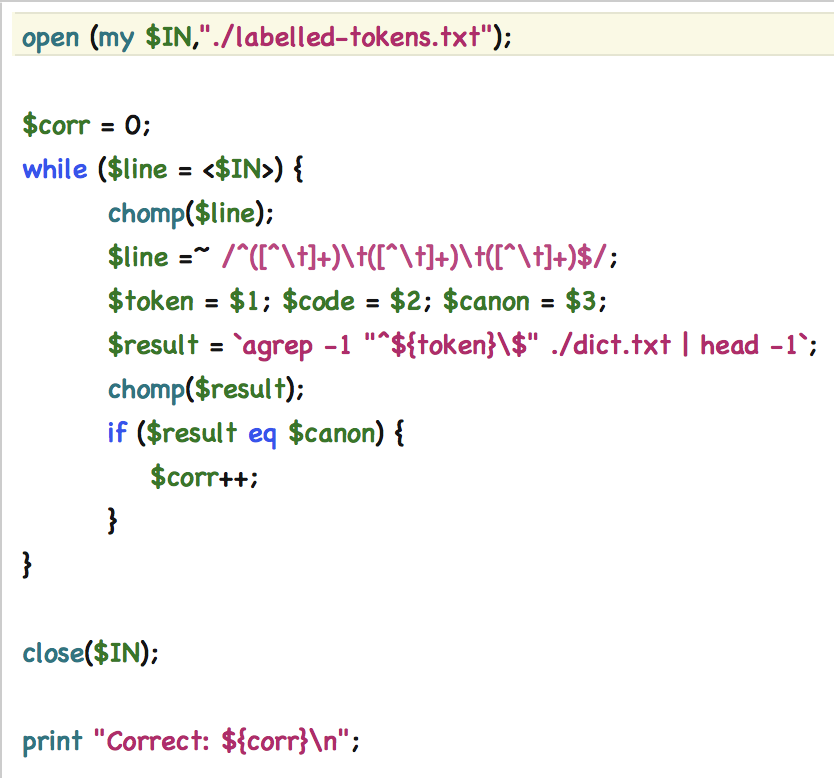Answered step by step
Verified Expert Solution
Question
1 Approved Answer
it's a question about Neighbourhood Search. I used perl to write a piece of code, like picture shows below.The aim of this code is to
it's a question about Neighbourhood Search. I used perl to write a piece of code, like picture shows
below.The aim of this code is to help a string in one txt file named labelled-tokens.txt (file 1) find a best match in another txt file named dict.txt (file 2). As you can see I have to manually input the string (picture 2) in file 1, how can I automatically approximatedly match every string (one word per line) in file 1 with every token in file 2?


Step by Step Solution
There are 3 Steps involved in it
Step: 1

Get Instant Access to Expert-Tailored Solutions
See step-by-step solutions with expert insights and AI powered tools for academic success
Step: 2

Step: 3

Ace Your Homework with AI
Get the answers you need in no time with our AI-driven, step-by-step assistance
Get Started


